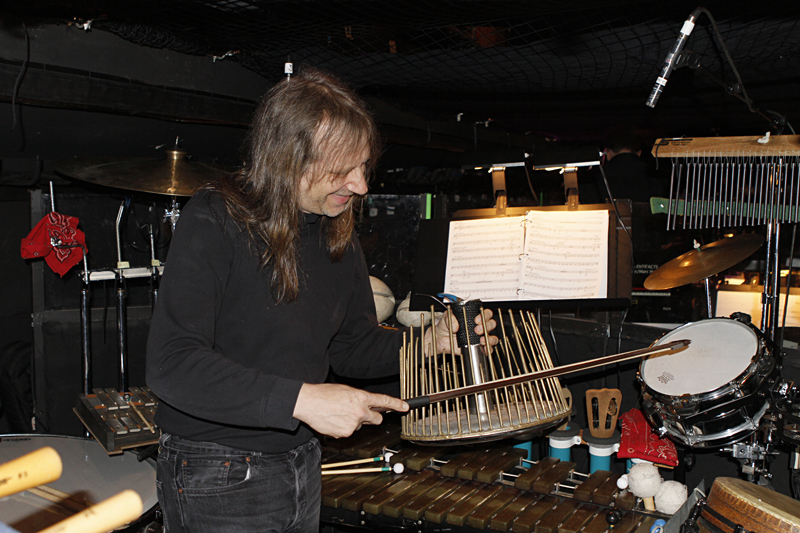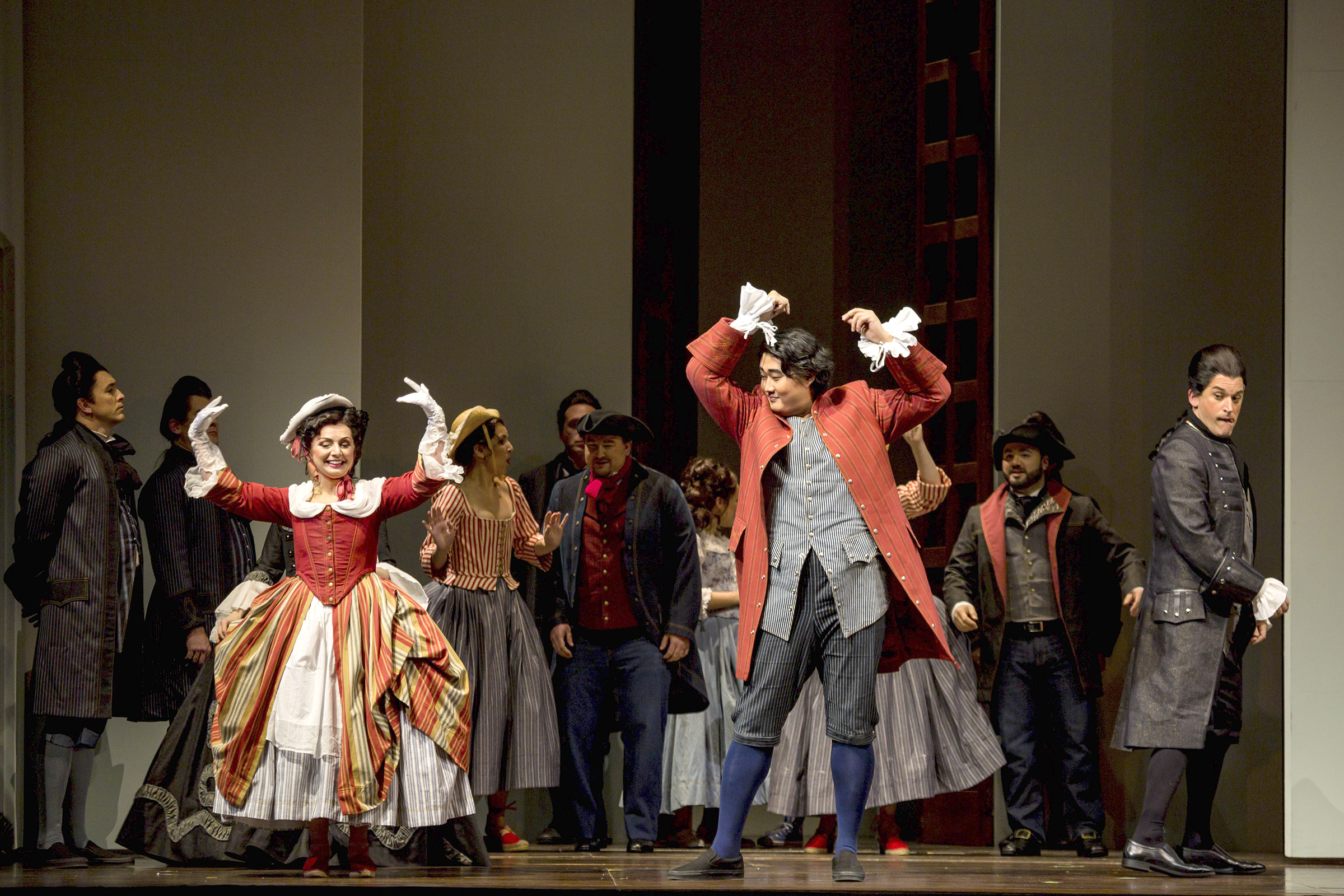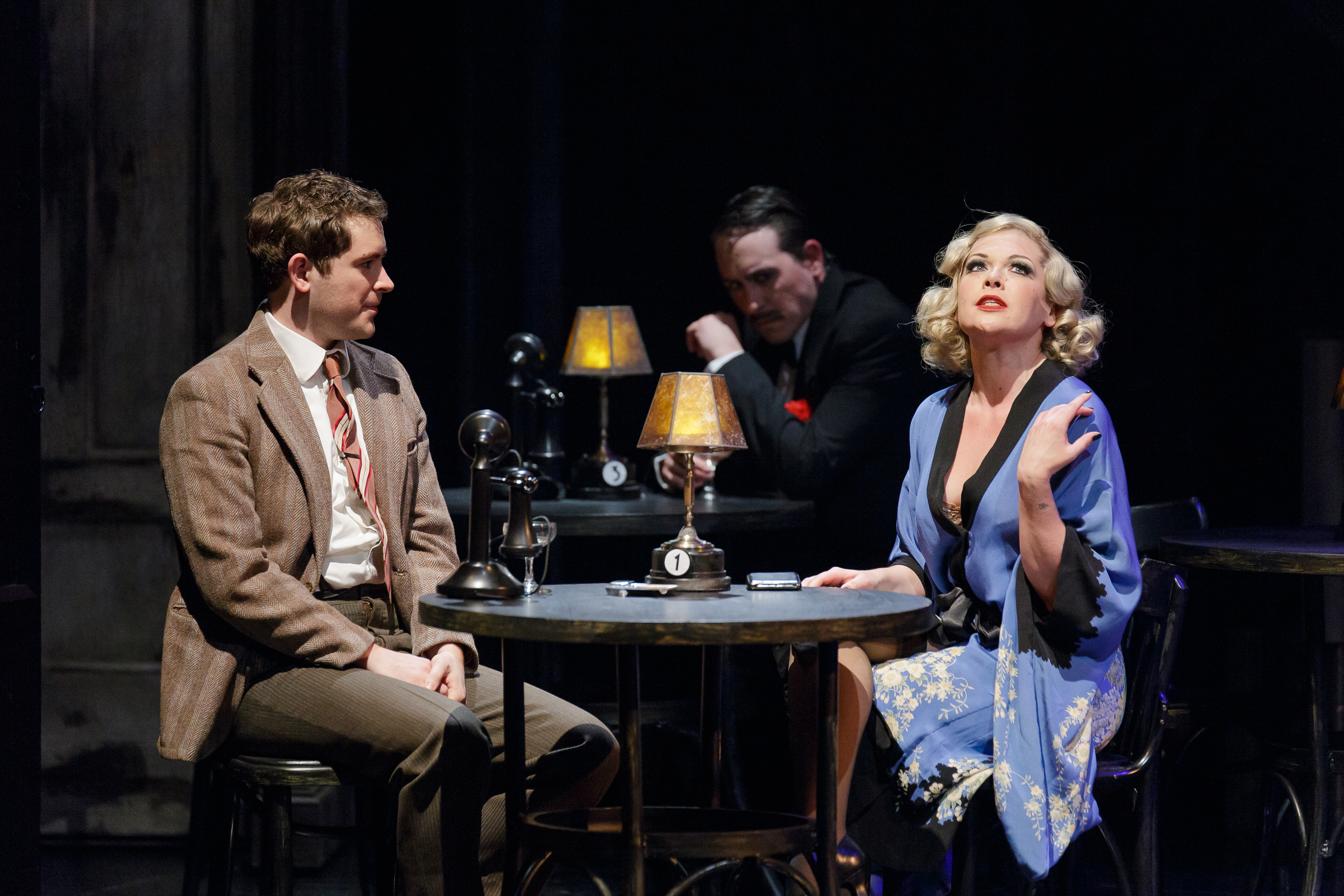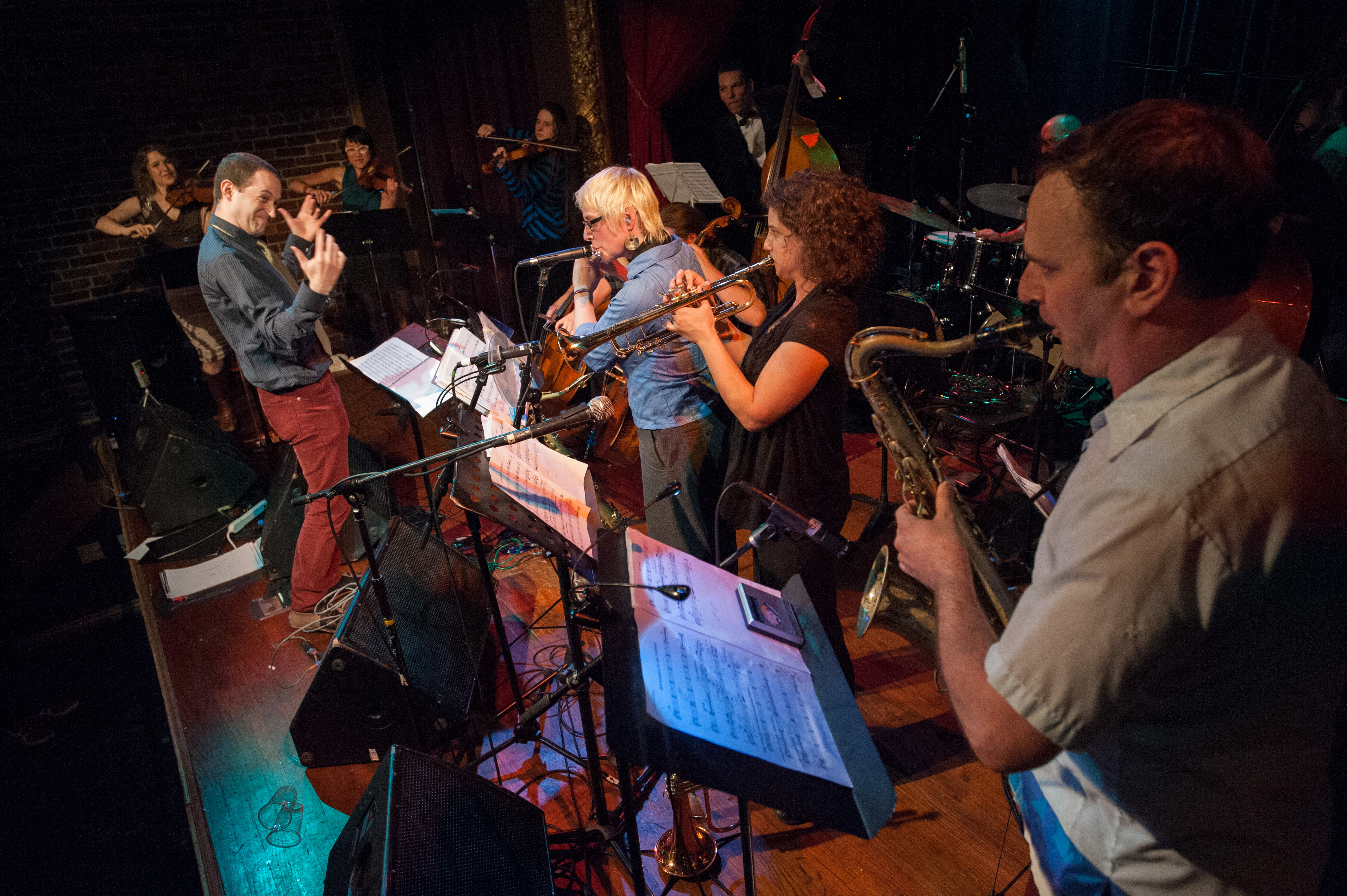At one end of the 5th Avenue Theater’s orchestra pit, Paul Hansen has set up a sort of cage, or magpie nest, of percussion instruments—surrounding himself, 360 degrees, with no fewer than 35 of them, each needed at some point in the exotic, Arabian-flavored score of Aladdin, the new Disney adaptation getting a test run here (see review, page 19).
There’s only one way into this setup, and on a recent Sunday evening before showtime, Hansen opens a door at the lip of the stage and acrobatically snakes under a rack of gongs and perches on a stool. “If I can walk out standing upright,” he says, “I’ve wasted space somewhere.” At arm’s length are, among much else, two timpani, six bongos, a xylophone, a glockenspiel, a bass drum, four tubular bells, a couple of cymbals, a vibraslap, a jug band–style washboard, a tambourine, a thunder sheet, and a music stand on which it looks as though a toy box full of noisemakers has been upended. (It’s large, but not the very largest percussion setup he’s ever used—Miss Saigon required 20 gongs and taiko drums. Or rather, Hansen required them: “In New York they used a lot of electronics, and I wasn’t gonna do that.”)
Aladdin opens with a thundering orchestra hit and a timpani roll, with a huge cymbal crash for drama (the show’s orchestrator, Danny Troob, asked for a big “J. Arthur Rank gong sound”). Not much later, within a few seconds, Hansen beats or caresses a mark tree, a triangle, a doumbek, and a string of Indian temple bells. It’s a virtuoso performance. Sometimes the sounds come simultaneously: In the middle of scratching a rhythmic groove on a güiro, he’ll reach over and hit two notes on the glock. Or sometimes they come in tiny, isolated fragments: three notes on this, four bars’ rest, one stroke on that, 12 bars’ rest. A missed cue, a miscounted rest, would destroy the precisely timed effect. Two arms aren’t always enough; he usually holds a stick or beater of some sort in his mouth, ready to go.
Hansen practically needs to have his part memorized, though he does have three copies of the music readily visible in whichever direction he has to face—and for those moments when he has to play facing away from the conductor, there’s a tiny TV monitor in the back corner. Plexiglas sheets act as a sound buffer between him and the rest of the players in the 18-member orchestra, including a second percussionist, John Redsecker, who presides over the trap set. A net stretched overhead ensures nothing will fall off the stage and onto his head: “They’ve got scimitars up there.”
Hansen grew up with music—his father was both a church organist and the music director (dubbed “Mr. Music Man”) for KING-5’s children’s show Wunda Wunda (where young Paul got to hang around the set). This combination of classical and theatrical worlds foretold Hansen’s own dual career: He also plays frequently in the Seattle Symphony and Pacific Northwest Ballet orchestras, and is a member of the Pacific Rims percussion quartet. Dabbling in acting as a kid, he soon switched to the musical side. Even before graduating from UW as a percussion major, he began to get work—his first professional gig was a Northwest tour with Liberace’s show at age 17. By 20 he’d played for, among others, Johnny Mathis and Steve Lawrence & Eydie Gorme.
But it was a little-known musical called Grand Hotel, which played Seattle around 1990, that revealed to Hansen that musical theater was his calling: “I realized then that, yeah, this is what I want to be doing.” Today he’s the 5th Avenue’s go-to percussionist for both in-house productions and touring shows. (Generally, a show will tour with a core of musicians—the conductor, the keyboardist, a few other principals—and hire the rest of the pit orchestra locally.) Hansen estimates he’s played in the pit for 80 shows at the 5th Avenue alone, and he spends usually 12 to 16 weeks there a year.
For Aladdin, a new show in development, there’s been unusual opportunity to experiment. This Sunday performance I observe includes some new music cues, and Hansen has suggested to Troob a few special percussion effects. For example, when villainous Jafar performs an incantation, Hansen uses the hollow, haunting sounds of a waterphone, a contraption with a number of brass prongs that are bowed while swirling water inside bends the tones into ghostly glissandi.
Before the show and at intermission, Hansen’s curiosity shop draws audience members’ attention, allowing him to chat and explain what he does. He relishes the opportunity, he says: “It’s nice to remind people that this actually is live music.”







